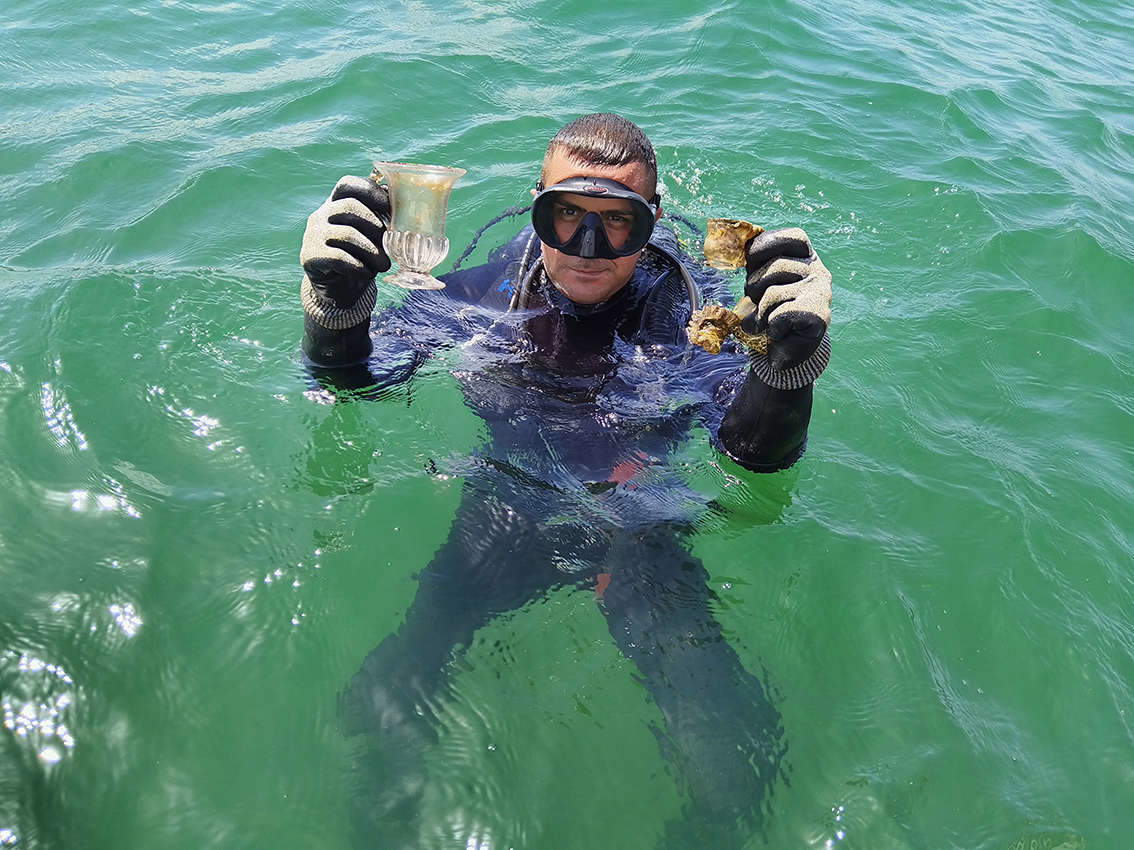Yet another important archaeological discovery comes from Bulgaria, where just a few days ago news was given of the discovery of a statue of the god Hermes from Roman times. Last June (although the news was given in these days), following some underwater archaeological research in the sites of the Gulf of Burgas in the Black Sea, and to be precise off the bay of Chengene (literally “Gypsy Bay”), located about 8 kilometers south of the port city of Burgas. In the waters, archaeologists have in fact found at least a hundred glass objects (112 to be precise) dating back to the time of the Ottoman Empire. Until this year’s underwater expedition began, the glass artifact collections of the National History Museum and the Burgas Regional History Museum included 310 fragmented and whole vessels, which have been thoroughly described and published. The research in the waters of the bay, funded with resources from the Burgas Municipality, was organized by the Regional History Museum of the Bulgarian city, conducted by a team led by Professor Ivan Hristov, and involved five areas located at different locations in the bay.
The discovery follows the discovery of dozens of fragments of glass objects in 2020 and 2021. The seabed is at a depth of -2, -2.5 meters, and it is assumed that it is possible that glass was spilled from a ship or cargo during a storm, the consequences of which were aggravated by the presence of outcropping rocks. Moreover, the probability that the wreck of the ship carrying the glass vessels is located near the site where the glass fragments were found is very high, according to scholars. The basis for this hypothesis is provided by several fragments of iron anchor chains and highly fragmented ceramic vessels found underwater that bear traces of ceramic production in general for the Late Middle Ages and the Renaissance.
The main result of this discovery, the Burgas Museum of Regional History points out, is the location of the area with the highest concentration of glass finds. The new finds represent an important source of information on the little-studied topic of glass consumption, trade and production in the Balkans during the late Ottoman period. As for the objects found, it has been suggested that the vessels were most likely produced in a workshop on the island of Murano in the second half of the 16th century or early 17th century.
The new finds will be displayed in the Burgas City Archaeological Museum after conservation by specialists.






 |
| Bulgaria, more than a hundred glass objects discovered at the bottom of the Black Sea |
Warning: the translation into English of the original Italian article was created using automatic tools. We undertake to review all articles, but we do not guarantee the total absence of inaccuracies in the translation due to the program. You can find the original by clicking on the ITA button. If you find any mistake,please contact us.